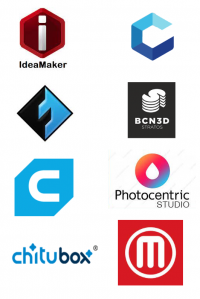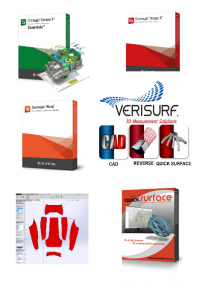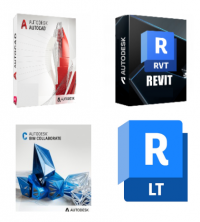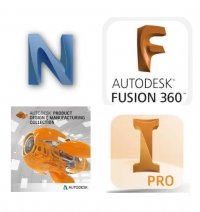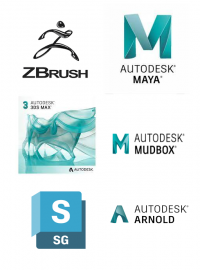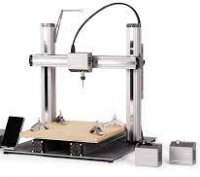- Shop All
- BRANDS
- 3D Printing
3D Printing Materials
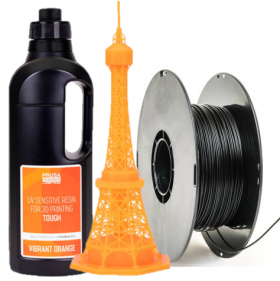
All 3D Printing Parts/Accessories

- 3D Scanning
All 3D Scanners
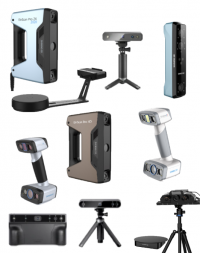
3D Scanner By Type
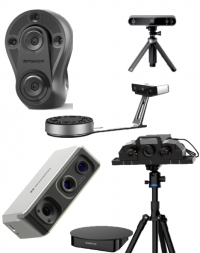
3D Scanner Parts/Accessories
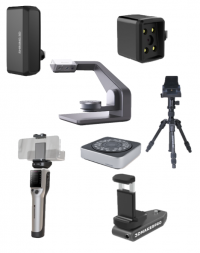
- SOFTWARE
- Other Tech
3D FORMERS

WELDING
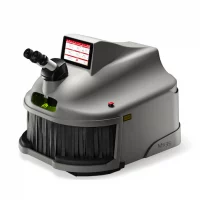
5 ways to stop wasting money on production processes

| Another useful white paper from Ultimaker we wanted to share with you. |
Introduction
Additive manufacturing is revolutionizing production processes. Fused filament fabrication (FFF) 3D printing in particular has been adopted by diverse industries around the world, from automotive engineering to the health and beauty industry. These global brands use 3D printing to shrink production costs, accelerate time to market, and outpace their competitors.
In this white paper we highlight the five areas on which to focus to make your production processes more cost efficient, and look at just a few of the industry leaders already using FFF 3D printing to reduce production costs.
1 – Print tooling in-house
3D printed manufacturing helps to elevate quality and effectiveness, and reduce costs.
Factories and workshops rely on manufacturing aids to streamline production. Jigs, fixtures, and quality gauges facilitate faster machine setup, reduce deviations during assembly and fitting, and hold parts securely, but manufacturing aids are often highly customized items.
Outsourcing production results in long lead times and additional costs, placing your manufacturing at the mercy of the supplier. When design changes are necessary, the cycle must begin again, causing additional delays to product delivery.
3D printing, on the other hand, provides flexibility and removes these constraints. Since each item is produced in-house, manufacturing is entirely under your control. Moreover, 3D printed polymers offer a range of properties, such as toughness, strength, flexibility, and chemical resistance. Materials are inexpensive, allowing for more extensive design iteration. So if tooling changes are required, or the work floor suggests ergonomic improvements to a tool, a new design can be 3D printed and deployed in a matter of hours. And if the new design doesn’t meet the mechanical requirements, it can be reprinted with a stiffer or tougher material, or a new iteration can be produced. If more parts are needed, simply print more.
Streamlined production. Reduced costs.
• Get ahead of the competition – less than 1% of global manufacturing currently takes advantage of 3D printing technology
• Low production costs enable a greater range of applications, with no compromises on ROI
• Items are easy to customize, refine, and adapt at minimal cost
• Tool development time shrinks from months to just days
• Assembly line yield and production efficiency is improved in a cost-efficient way
Ford Motor Company was able to implement more than 50 3D printed tools for high volume production of the All-New Focus, with considerable cost savings per tool compared to conventional methods. The alignment tool pictured above ensures that emblems and decals are consistent for each vehicle that rolls off the assembly line.
3D printed manufacturing aids are used by Volkswagen Autoeuropa to maximize production efficiency. For example, the pictured wheel protector jig prevents scratches and damage to wheel rims and simultaneously aligns an operator’s pneumatic impact gun to speed up the fitting process and reduce scrap costs.
Wheel protector jig External supplier Ultimaker 3D printers Cost per item €800 ($900) €21 ($24) Development time 56 days 10 days
Performing maintenance on complex and customized aircraft can be an expensive challenge. By adopting 3D printing, The Royal Netherlands Air Force is able to affordably create tools for specific applications within hours. 3D printed parts cost approximately $10 to produce, while traditional methods can cost over $1,000 for the same part.
3D printed manufacturing aids make production easier, faster, and cheaper for world leading beauty company L’Oréal. The pictured gauge keeps product packaging consistent by verifying that labels are correctly positioned. With standardized label placement and quality assurance, deviations are unlikely to hit the shelves.
2 – Validate designs faster
Keep up with rapidly changing consumer trends and outpace your competitors. 3D printed prototypes are cheaper and faster to produce, allowing you to verify your design before further investment.
In-house 3D printing accelerates prototyping cycles so that your products reach the market faster. Accurate and functional 3D printed prototypes are inexpensive to produce and can be shared with clients and customers to test form, fit, and function. A refined 3D printed prototype can also give other departments a head start on marketing communications and sales strategies – before the first production item is ever manufactured.
Polymers such as nylon or polypropylene can be 3D printed, so in some cases you can test prototypes with the same material properties as the final product. Items intended for production with expensive materials, such as precious metals, can be produced as an inexpensive prototype to verify physical characteristics. 3D printing can also be used for mold making, or for applications external to the product, such as packaging prototypes.
Faster prototyping. Better end products.
• Be confident of a product concept before investing in expensive production
• Prove a concept’s viability before producing it in more expensive materials
• Prototype with the same materials as production items, e.g. nylon or polypropylene
British manufacturing company Sylatech uses 3D printing to verify that pre-production items are dimensionally accurate and function as intended. When design requirements are met, these items are used to manufacture metal parts through investment casting.
Yacht propeller Conventional tooling Ultimaker 3D printers Project cost £17,100 ($22,500) £660 ($860) Project development time 4 weeks 5 days
Before adopting 3D printing, L’Oréal spent as long as 18 months on packaging prototype development. Now, designs can be validated in days.
Ukrainian pastry chef Dinara Kasko produces highly unique and artistic desserts, using 3D printed concepts to verify her designs. Printed items are then used to create silicone molds that are filled with ingredients to make the final dessert. The iterative freedom that 3D printed prototypes allow has also been instrumental in developing her own line of dessert molds.
3 – Create customized end-use parts
3D printed parts can be manufactured at low cost, enabling you to customize existing products.
Have you ever needed to repair products or machinery made of parts that are expensive to replace, or have been discontinued? 3D printing enables you to rapidly print high-quality functional parts, locally, and at low cost.
3D printing is unlike conventional methods such as injection molding, which must follow restrictive design-for-manufacturing rules. Instead, 3D printing enables the production of complicated geometries, and an iterative design process. This improves structural performance, saves material, and streamlines the design-to-manufacturing cycle.
The range of available 3D printing materials is expanding every day, so you’re likely to find a material that matches your application requirements – whether you need reinforced, ESD-safe, chemical-resistant, or other types of engineering-grade materials.
Flexible manufacturing. Bespoke solutions.
• Create complex parts quickly and cheaply
• Remove the limitations of outsourcing and design-for-manufacturing
• Benefit from an iterative design approach
If you’ve seen snow in a recent film or television production, 3D printing has likely played a part in producing it. Snow Business, based in the UK, is the world’s biggest supplier of winter special effects to the film and television industry. The diffusion nozzle is a critical part of their snow machines. After years of R&D, this nozzle has a liquid and airflow geometry so complex that it can only be made by 3D printing.
4 – Accessible, scalable manufacturing
3D printers are easy to set up and use, with minimal training or additional staff requirements. And their low cost means that you can easily scale production with additional 3D printers.
Ultimaker 3D printers are easy and safe to use and are compliant with international standards for safe unattended professional use. So you are safe to leave them to do their job, while you do yours.
Ultimaker Connect enables you to operate a short-run production facility, by enabling 3D printers to process a queue of jobs and manufacture items in parallel. All of this can be controlled from a single device.
Scale-up for less
• 3D printers can produce a variety of shapes, without the need to change tooling • Transportation, scrap, and waste disposal costs are reduced
• 3D printers are easy to use, so staff and training costs are reduced
• Ultimaker 3D printers are compliant with international standards for safe unattended professional use
• Network-enabled Ultimaker 3D printers are an automated and scalable production solution
Italian fashion brand Florenradica uses the versatility of 3D printing to produce items for a range of fashion houses. To meet the fast-paced and rapidly-changing demands of the fashion industry, Florenradica has scaled their 3D printing production by using a group of 50+ Ultimaker 3D printers, working in parallel for maximum efficiency.
5 – Simplify model making
3D printing frees your staff to develop concepts by enabling an iterative design process.
Model making is an essential step in architecture, product design, and other creative industries. These industries already rely on CAD modeling to convey ideas, so converting this data into a 3D print is a simple process. 3D printing models eliminates the time consuming and labor-intensive aspects of conventional model making, doesn’t require skilled labor, and creates less waste than conventional methods such as woodworking.
Architects are rapidly adopting 3D printing to create intricate prototypes, and no longer need to compromise on model detail or accuracy. From small models of intricate features to huge context models, precise and detailed prototypes can be accurately produced within hours.
Unlike CAD designs, 3D printing lets clients see, touch, and feel concepts to get a clearer idea of the spatial relations of a design. And if ideas need to be communicated rapidly across a large distance, CAD data can be shared and printed at each location.
Clearer concepts. Meaningful innovation.
• Clearly communicate ideas, with a model produced directly from your CAD data • Create complex geometries that are difficult to make by hand, with detail at large or small scales
• Reduce development times from months to just days
• Duplicate models as needed
Make architects in London used to outsource model making. A third-party supplier would build timber feasibility study models at a cost of approximately £20,000 ($26,500) and a lead time of up to six weeks. Using 3D printing, hundreds of individual structures can be produced in two days at a cost of £2,000 ($2,650) for labor and materials, and with a total build time of two weeks. This iterative design approach adds value and allows Make to better communicate their ideas to partners and stakeholders.
London-based MATT architects uses 3D printed concept models to communicate complicated ideas to their clients. Previously, they used hand-made paper or cardboard models. This was a labor-intensive and slow process that limited the range of ideas that could be conveyed. Now they can produce high-detail concepts within hours.
Explore more 3D printing knowledge
Don’t let the hurdles of traditional manufacturing slow down your good ideas.
Dream 3D stock the full range of Ultimaker 3D Printers, filaments and accessories along with many other leading brands and we are here to help you find the right solution for you.
If you would like to discuss the various options available on the market today to suit your specific needs please feel free contact us (info@dream3d.co.uk / 07789266163)
Thanks for reading 🙂

Specialist retailer of 3D Printers, 3D Scanners and 3D Software since 2013
Categories
CUSTOMER REVIEWS
© Copyright - Dream 3D Ltd | Cookie Policy | Privacy Policy | Price Match Promise | Refunds/Returns/Cancellations Policy


